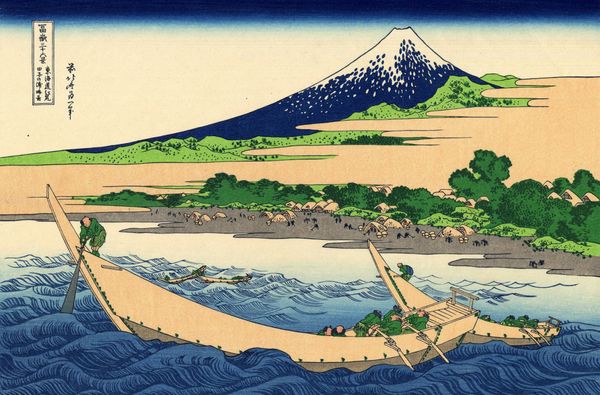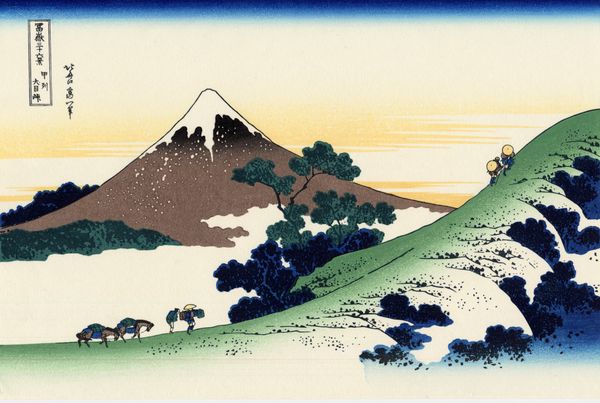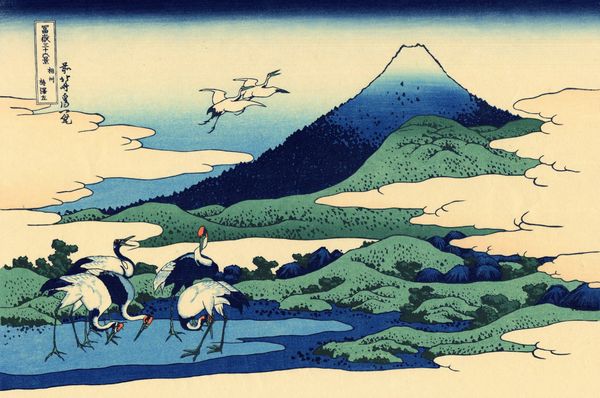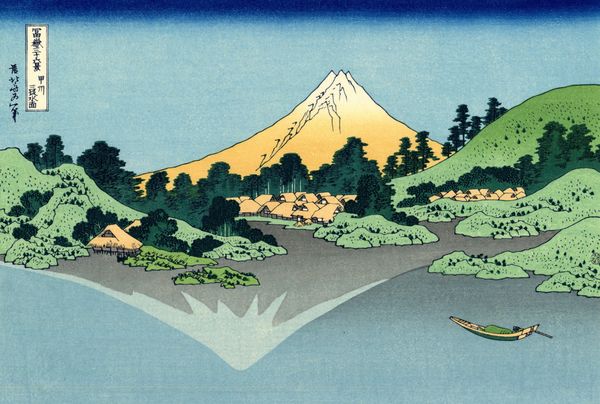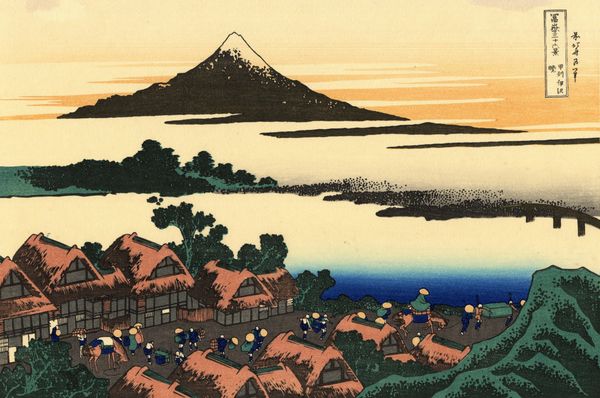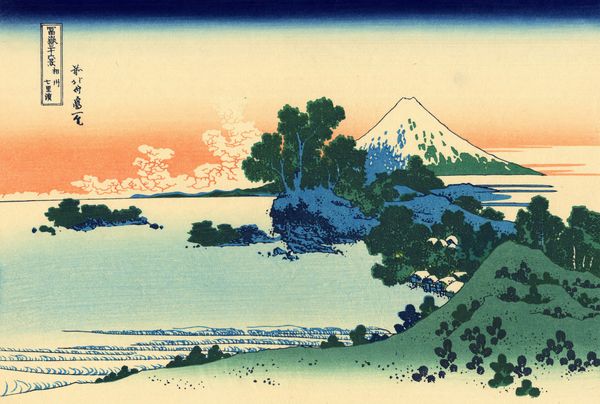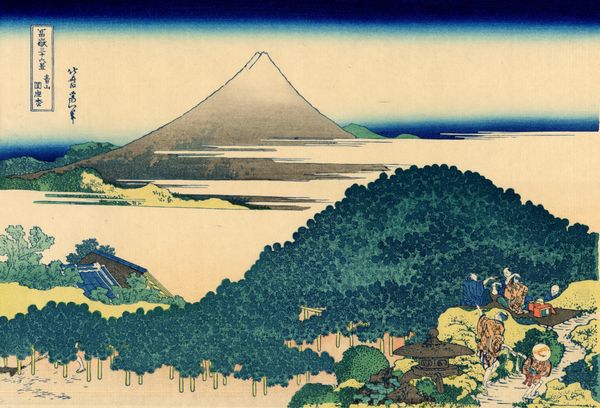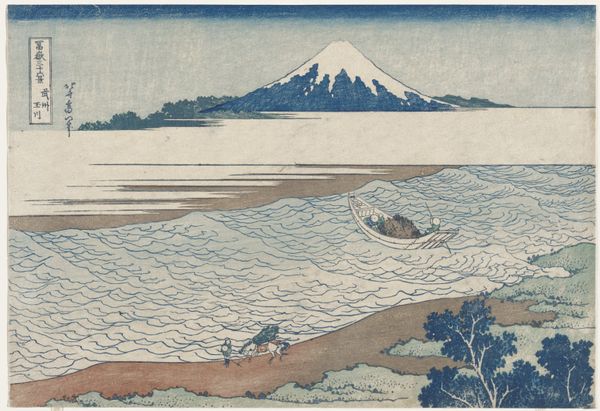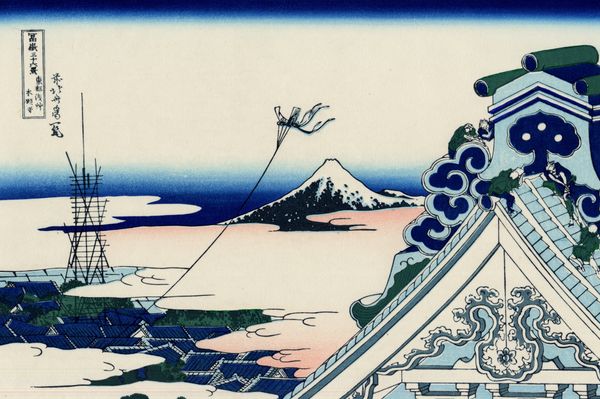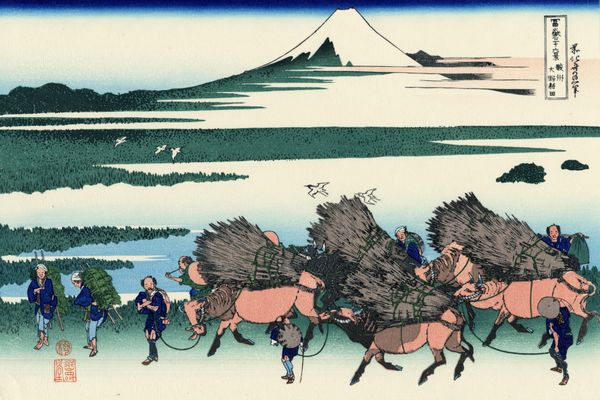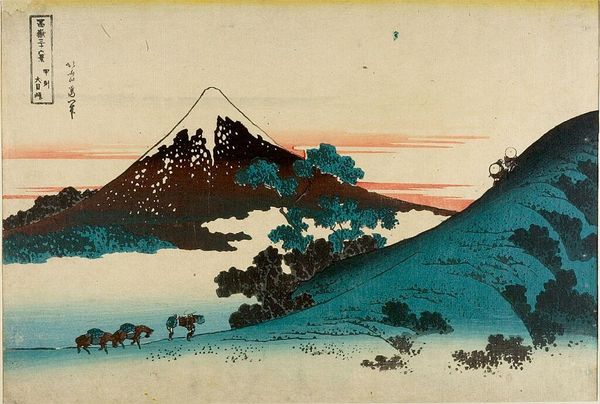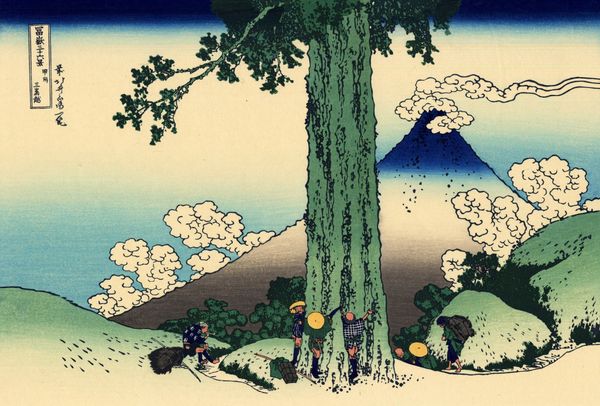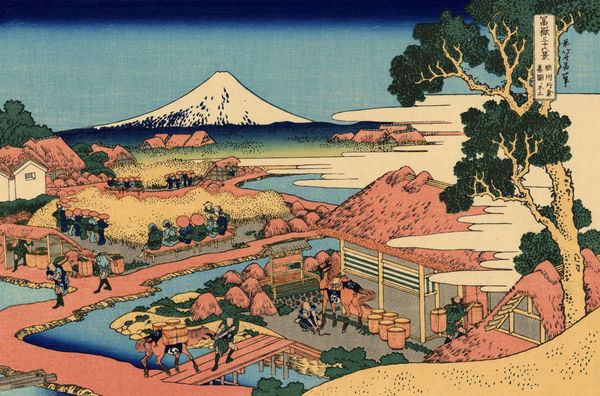
woodblock-print
#
asian-art
#
landscape
#
ukiyo-e
#
woodblock-print
Copyright: Public domain
Editor: Here we have Hokusai's "Tama River in the Musashi Province," a woodblock print. The colors are just beautiful – the gradient in the sky is so subtle. I’m curious, what are your thoughts on this print? Curator: The way the printmaking process itself informs the composition is central here. Woodblock printing was a highly collaborative process. It involved the artist, carver, printer, and publisher—each playing a crucial role. Consider how the line work and the layering of colors, all enabled by the materiality of wood and ink, create a sense of depth and atmosphere. What kind of labor do you see represented here? Editor: I guess I was focused on the beauty, but now I see it’s more complex! You’ve got the boat with the fishermen on the river, and then the figure leading a horse on the shore. So, the print represents both maritime and overland transport. Is it unusual to see everyday labor depicted so prominently? Curator: It’s characteristic of ukiyo-e prints. They brought what was formerly considered low subject matter--daily life and commercial activities--into the realm of fine art. Note the relatively flat planes and the stylized depiction of water – consider how the limitations of woodblock printing influenced the style and aesthetic choices of the artist. Do you see any connection between the material conditions of production, and its artistic outcome? Editor: Well, now that you mention it, the clear outlines, and the way the colors are blocked off so neatly... It feels like the print is celebrating the artistry *and* the labor of its production! The final product highlights this blend, emphasizing the skill of the craftsman over an attempt to achieve photorealistic perfection. Curator: Exactly! And the market for these prints consisted largely of common people, so we need to factor in consumption as well. Appreciating this piece now requires us to move beyond conventional art history to acknowledge labor, distribution and consumerism in feudal Japan. Editor: Wow, I never would have thought about the piece in this light without your help! It shows how understanding materials can help unlock so much in an artwork.
Comments
No comments
Be the first to comment and join the conversation on the ultimate creative platform.
